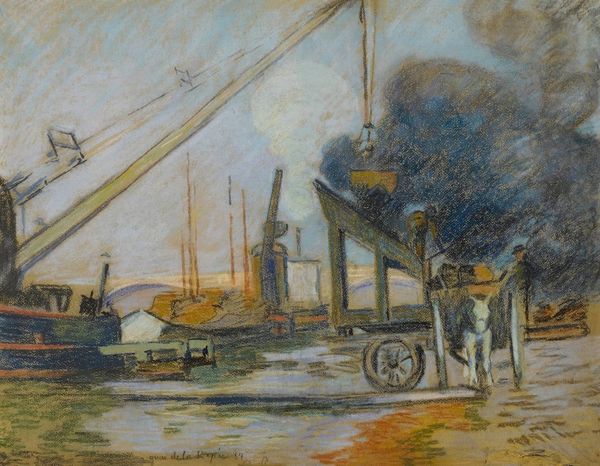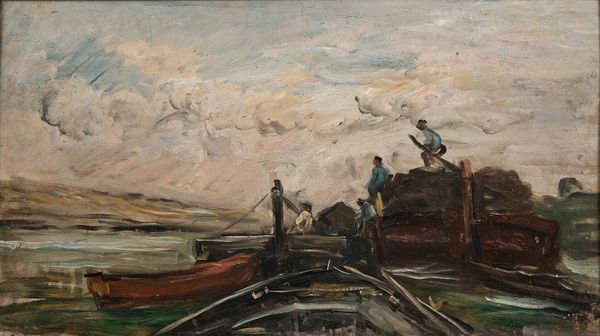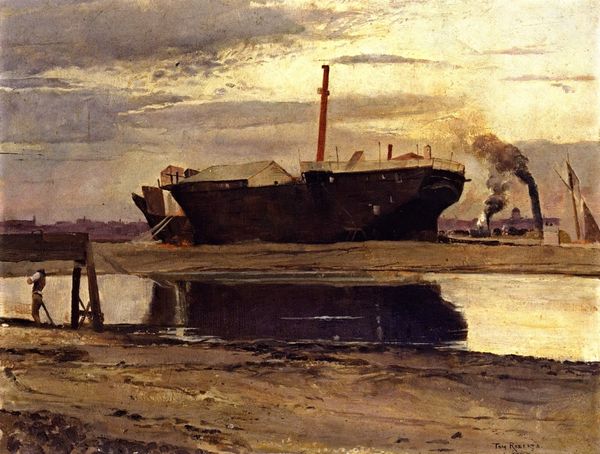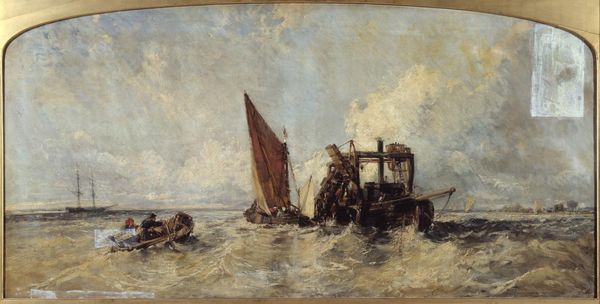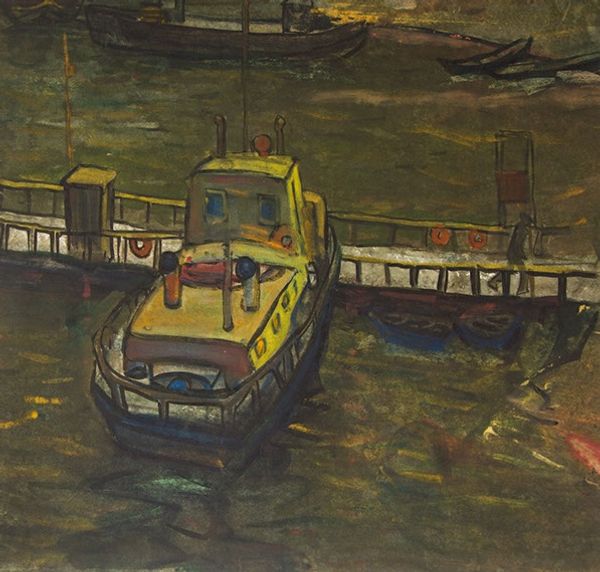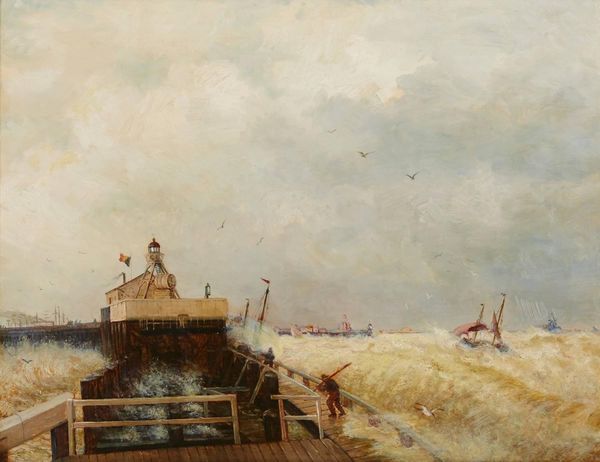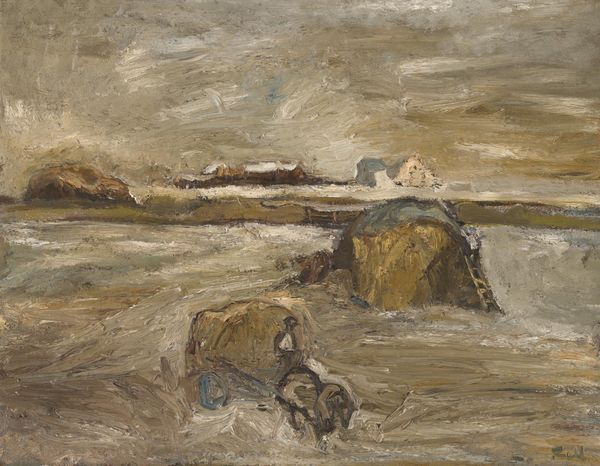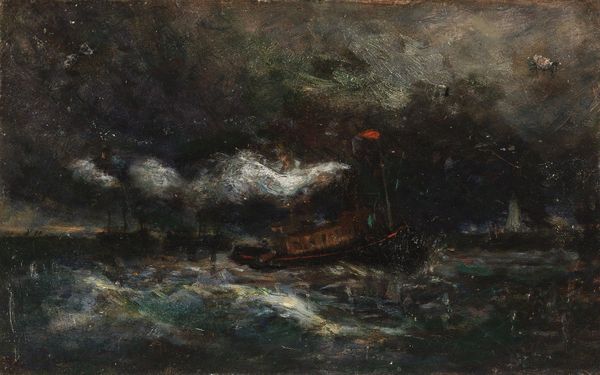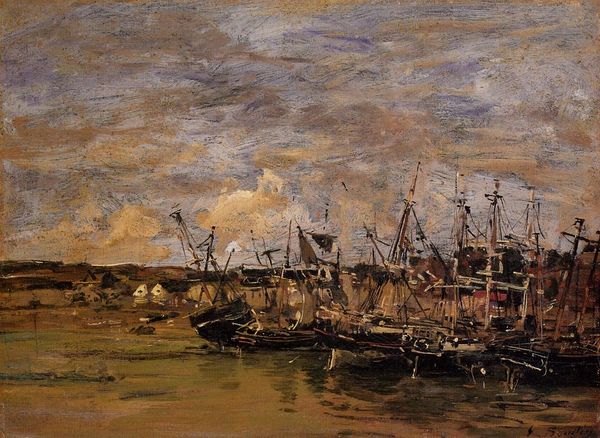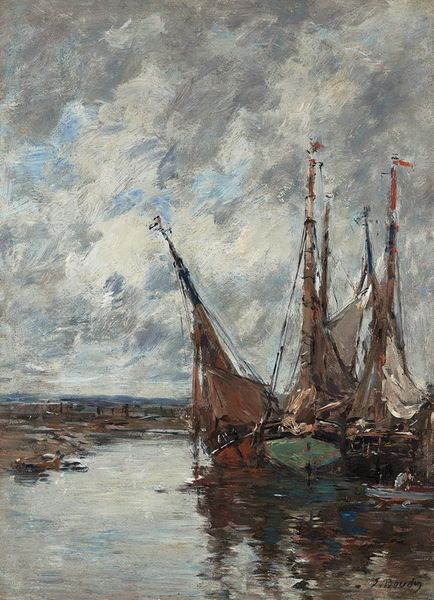
Copyright: Public Domain: Artvee
Curator: Charles-François Daubigny’s “River Boat,” painted around 1860, grabs you with its boldness, doesn't it? He worked with oil paint to conjure up this river scene. Editor: Absolutely! The scene feels almost turbulent, with those brooding greys and blacks—makes you feel a bit seasick just looking at it. The choppy water and smoky sky, you can almost smell the damp air. Curator: Daubigny was a pioneer, painting en plein air, which was quite radical for his time. Instead of being cooped up in a studio, he chased the light and mood right there in front of the landscape. Editor: It’s palpable—you can tell it was done on location! Knowing it was created outdoors really explains the dynamism and how quickly he worked; you can see Daubigny applying impasto—thick, visible brushstrokes to give it such immediacy. This really pushes boundaries when the academic style was so popular! Curator: He was looking at modernity unflinchingly, the rise of industrialization impacting the French landscape, you know, it is no accident that a steamboat appears like this, dominating the horizon. Editor: Absolutely. I also see the romanticism of that age: a time before mass production changed everyone’s day-to-day existence when rural settings such as these began fading, but their presence kept inspiring artists like Daubigny. I can’t help but also wonder about how paintings like these shaped the viewers’ expectations for public works and infrastructure, and ideas of progress. Curator: The romance is still very apparent here—Daubigny offers a beautiful balance with his vision, between nature's resilience, and human advances! He sees the melancholic charm as the landscape undergoes change. You wonder where they’re headed. Editor: So true. The painting doesn't feel celebratory, but it feels aware of something profound. It’s a moment, suspended. Curator: Looking at it, I get this strange sense of urgency, or momentum, you know? It’s as if Daubigny knew that painting outdoors, as fast as he could, he was participating in documenting some critical transition. Editor: I leave here with a feeling for how society in mid-19th-century France perceived its progress, now tempered with a longing for the pastoral.
Comments
No comments
Be the first to comment and join the conversation on the ultimate creative platform.
